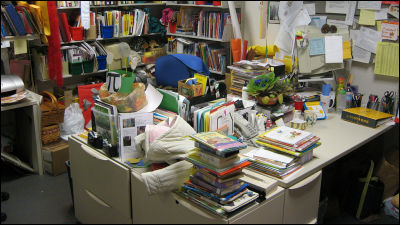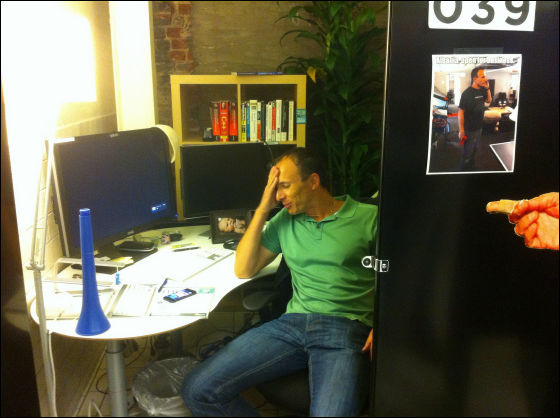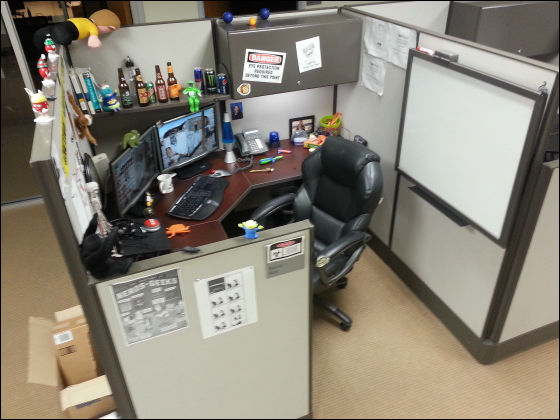Points where the workers looking stress by type of office feel

ByBrian Herzog
The results of investigating the stresses and dissatisfactions felt when spending in offices such as "dirty desk" "surroundings are noisy" "room temperature is too high · too low" "not feeling bad" University of SydneyResearch by Jungsoo Kim and Richard de DearIt is clarified inHarvard Business ReviewIt is open to the public.
Research: Cubicles Are the Absolute Worst - Sarah Green - Harvard Business Review
http://blogs.hbr.org/2013/11/research-cubicles-are-the-absolute-worst/
How to use the office desk is person. Some people say that work will not proceed unless they are clean and tidy, others will place their own stuff regardless of where they make their own forts. The graph which summarizes by office type by which type of office work space dissatisfies is as follows.

Types of offices are roughly classified into 5 types.
◆ Enclosed private(Private room)

ByEd Hunsinger
◆ Enclosed shared(Shared private room)

ByJake Khuon
◆ Cubicles with high partitions(Office partitioned by high partition)

BySlworking 2
◆ Cubicles with low partitions(Office partitioned by low partition)

ByDave MacFarlane
◆ Open office with no / limited partitions(An open office without partitions)

ByPhil Whitehouse
Looking at the graph, people working in offices without partitions are more frustrated by surrounding noises rather than being frustrated by looking at the scattered desk in office with few walls It seems. Also, you can also see that 30% of people who work in offices separated by partitions and about 25% of people who spend at the open office have strong discontent with the noise level.
And lack of privacy about sound is the source of most frustration in many office types. People working in office spaces separated by open offices and partitions are almost impossible to control the sound coming into the ear because the walls that block surrounding sounds are overwhelmingly smaller than the office in private rooms. According to the survey, it is said that the lack of privacy regarding this sound is the most stressed problem for about 60% working in the space partitioned by the partition and about 50% working in the open office. According to researchers, people working in open offices are less concerned about sound problems than people who do work in space partitioned by partitions because there is no partition so we can see where sounds are emitted ,Is called.

ByBen Husmann
Other sources of frustration are privacy problems and temperature problems in vision. Surprisingly there were not so many office workers holding frustration with regard to smell.
Previous research cited in Kim's and Mr. Dear's research has already shown that "loss of productivity caused by noise at the open office is twice as high as in office in a private room", and this productivity Loss has turned out to be unable to offset in improving the efficiency of collaborative work to be upgraded by becoming an open office. For those working in any kind of office, "Ease of interaction" seems not to be a big problem, so people who work in a private office are actually more likely to work You can also see from the graph that you are not bothered by collaborative work.
In addition, researchers used regression in the data to examine not only what was most frustrating, but also how important their frustration is with respect to overall satisfaction. As a result, the most important problem for a single person was that the work space was narrow.

Among the multiple office types, it is quite impressive that people who use office of single room type are less dissatisfied with the surroundings and the work environment. Sounds from the surroundings of other office types can also be drastically cut if they are private rooms, but the problem comes to be part of how many private rooms can be secured for the number of employees ... ....
Related Posts:
in Note, Posted by logu_ii







